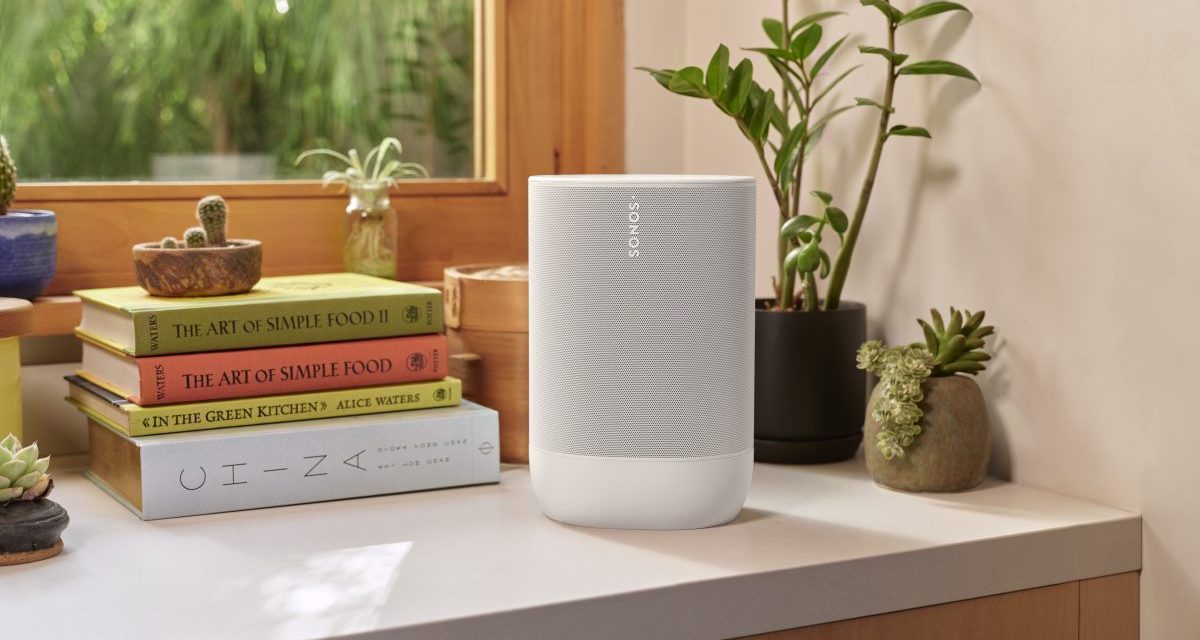How Sonos revamped its website to drive DTC sales

When Sonos adopted a headless content management system using Salesforce and Sanity about two years ago, the e-commerce team made the unconventional decision to move away from the single-page checkout that’s become nearly ubiquitous. Instead, it opted for a three-page flow for billing, shipping and ordering, a move that global e-commerce project director Sean Knotts said was meant to help the shoppers focus on the task at hand for their high-ticket purchases.
The result? Sonos saw a 24% lift in cart completion rates after the checkout enhancements went live.
“Retailers assume that the ease of the experience is really helping them sort of through it more quickly, and I think that is true,” Knotts said. “But you also want to give customers a sense of space and context.”
Sonos, the audio company that made $1.6 billion in revenue last year, sees the vast majority of its sales happen at its in-person retail outlets at places like Best Buy and Apple. But growing the direct-to-consumer business is a focus for 2024. At the brand’s fourth quarter earnings call in November, CEO Patrick Spense said that the DTC generated about 23.8% of total revenue for the fiscal year.
That’s an especially critical mandate as electronics brands like Sonos has been challenged by inflation and people cutting back on discretionary spending. During the company’s first quarter earnings, reported on Tuesday, sales were down 9% compared to the same period last year.
Building a bespoke direct-to-consumer online experience isn’t a fit for every brand. But Sonos, which makes high-ticket sound systems that can easily run past four figures, is aiming to create what Knotts calls a “premium” experience. That means adding more storytelling, space and time spent on the site rather than building a quick shopping experience. After months of replatforming and AB testing, traffic is up 13% year over year.
“We’ve found in the past that our investments and brand building have really paid off, because it helps us to navigate customers from interest through consideration.”
In addition to the checkout page, Sonos’s web strategy focuses on showing how its products can connect to each other to form a whole sound system. About 60% of its customers have more than one Sonos product — and Knotts is laser-focused on figuring out how to get the other 40% to expand their system. On its product display pages, customers are presented with a drop down menu that shows the product bundled with other items. That means a customer browsing an Era bluetooth speaker would have the option to purchase a surround sound setup or with a sound bar.
This serves as “a really subtle introduction of sets” that Knotts says leads to more conversions and order volume, as the changes yielded a 4% lift in conversation rate, and a 26% lift in order share of product sets.
“You can’t go to a product page without learning about systems through some potential angle,” Knotts said.
Driving more DTC business means serving new customers and existing Sonos users, Knotts said. For new customers, paid social has been a key way to get people onto the site, and Knotts said Sonos will be deploying more native social checkouts to help convert those users, primarily focusing on Instagram and Facebook. That way shoppers who see paid ads on those platforms are taken to brand-aligned pages, Knotts said, and seeing relevant product. Existing shoppers, meanwhile, are given a 30-day post-purchase email journey to help drive repeat sales.
Once on the site, users are shown bold photos and videos with lots of specs written out on the product display pages. First-time customers often “volley between online and offline” before converting, Knotts said, like looking at pricing on Amazon but checking out the systems in person at a Best Buy. Sonos.com can be a place where they can learn more about the specs and systems, while repeat customers can see suggestions that complement their original purchase.
“We understand that when you purchase a premium audio product, it’s a really high consideration journey,” he said. “We just invest a lot of energy, and attention and helping customers navigate that purchase decision with those rich educational experiences.”
Arjun Reddy, svp of revenue at Disco, which specializes in ads for DTC companies, said few brands can break away from conventional web practices, like a checkout flow or simple product page, and still see a lift in sales. But Sonos has a big advantage with its established brand and large national footprint.
“The true pro is that you control the look and feel of your site. Their brand is everything,” Reddy said. “But at the end of the day, the con is that everything is going to be a lot more difficult to build and maintain. It’s going to be more expensive, as opposed to plug and play.”
Reddy said that a natural next step for Sonos would be to create a loyalty program to help bridge the divide between retail and online shoppers. “Given the brand and quality of their products and loyalty of their shoppers, they probably will be successful,” Reddy said.
There’s a possibility that could happen this year. Knotts told Modern Retail that Sonos is currently testing out different loyalty models with users or prospective customers. “I think that that’s a huge opportunity for us in the future, both to drive account creation and account usage among prospects, but also to help existing owners navigate their purchase decisions,” he said.
Getting the DTC game right also helps tee up Sonos for its much-anticipated category expansion. Spence said on an earnings call Tuesday that the brand aims to enter a new category in the third quarter, though he remained mum on specifics. The launch, he said, “will give us a foothold in a new multibillion category,” and “further diversify our business.”

